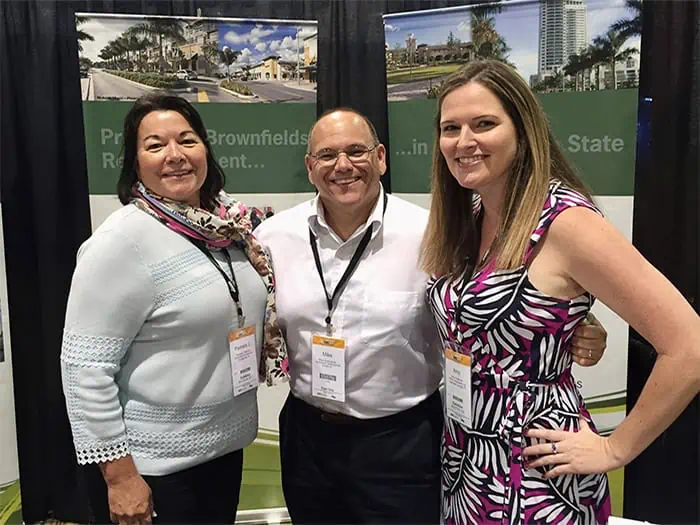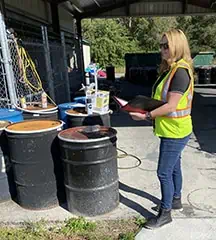


Executing Brownfield Redevelopment
Green spaces are dwindling rapidly as real estate development forges ahead; meanwhile, a plentiful inventory of brownfields lie idle or underused that have great potential to become vibrant, revenue-generating resources.
Well-executed brownfield redevelopment projects make the most of existing infrastructure, leaving green spaces green. They create jobs and increase property values. They improve the health and safety of the environment and people. And turning former liabilities into neighborhood jewels cultivates a spirit of goodwill among residents.
As developers and governments realize the benefits, old gas stations, defunct factories, and closed landfills are among the properties redeveloped into community parks, retail, industrial, or mixed-use properties to become productive assets.
But while communities and private investors can reap tremendous payoffs, successfully repurposing brownfields can be complicated. They may be laden with hazardous substances and other contaminants from past uses, calling for specialized technical expertise to ensure sustainable environmental and financial outcomes.
Meet Amy Guilfoyle
SCS Engineers’ Amy Guilfoyle has been deeply rooted in brownfield redevelopment work for 20 years, supporting plans to ensure projects are technically sound, on time, and on budget.
Groundwater and soil assessment and remediation are her primary focus. Her job involves more than these essential tasks—from helping local governments apply for U.S. EPA Brownfield assessment and cleanup grants and voluntary cleanup state tax credits to ensuring and documenting regulatory compliance.
When Amy was a new biology graduate, she was not sure exactly what career direction she would choose until she got a full taste of fieldwork with an environmental focus.

“I like working on practical solutions to our clients’ day-to-day problems. And I like the creativity involved in finding and developing the best options in each case. Every scenario is unique, challenging you to keep the wheels in your mind turning,” she says.
Guilfoyle’s work typically begins with a Phase I Environmental Assessment, entailing an inspection of the property and a review of documents to evaluate for potentially hazardous pollutants and contamination. She will move on to a Phase II Environmental Assessment, depending on her findings, collecting and analyzing soil and groundwater samples to determine concentrations, locations, and other details to inform what may become her next course. The results help lead her team in developing and executing a rigorous cleanup strategy to meet regulatory standards.
The practiced brownfields veteran has her work cut out for her, especially on her dedicated turf; the state of Florida, whose groundwater and soil quality standards are even more rigorous than the U.S. EPA’s. Guilfoyle must not only stay on top of stringent regulatory demands but know how to strategically approach complex challenges tied to the region’s unique physical conditions.
“For one, as we monitor and plan remediation, we consider soil characteristics. Like much of the Southeast part of the country, Florida is sandy, making it easier for contaminated water and materials to move through the ground than in rocky areas,” she explains.
“Additionally, we give careful thought to the fact that the water table is shallow, which means saturated soil is close to the land surface, increasing the risk for groundwater contamination.”
Protecting groundwater is the most meaningful work she can do in her eyes.
“Keeping groundwater clean is so important to our public health and safety, as it is the major source of drinking water,” Guilfoyle says.
Sizing up cleanup options
In determining the best method to tackle soil and water impacts, she considers multiple variables: regional standards, the proposed use of the property, and clients’ overall goals.
Every success story hinges on protecting human health and the environment while keeping an eye on the bottom line—economics.
“Our clients are taking on huge projects that can have substantial cleanup costs. Our priority is to develop solutions that limit their out-of-pocket costs and liability. But doing it more effectively, so the outcome is a rich resource that serves communities well into the future,” Guilfoyle says.
A solid understanding of regulations is key to delivering sound technical and financially feasible outcomes.
She exemplifies this, beginning with a recent approach involving removing contaminated soil and using the nonimpacted soil as part of a pond construction to expand stormwater holding capacity.
“In this scenario, you save on the cost to transport hundreds of tons of soil and put it to use to build out existing infrastructure. Also, fewer trucks are coming in and out of the site, mitigating a nuisance and greenhouse gases.
“In other scenarios, we have been able to negotiate cleanup levels above the standard by providing documentation to show they are sufficient for full compliance.”
Forging industry relationships through professional engagements
Guilfoyle knows the agencies well through her work at SCS and professional engagements beyond.
Among her involvement, she’s a board member of the Florida Brownfields Association (FBA), supporting educational and outreach efforts and legislative initiatives to secure funding for cleanup projects.
She serves on the Florida Association of Environmental Professionals (FAEP) board, reporting business activity to local chapter members.
She lends her expertise as a board member for Metropolitan Environmental Training Alliance (METRA), promoting free and low-cost training on hazardous waste management requirements and other environmental regulations.
Outside her leadership roles in industry organizations, she finds time for her passion—telling others about the environmental industry. She has been involved with teaching Boy Scouts and Girl Scouts at Science, Technology, Engineering, and Mathematics (STEM) events and introducing college students to job opportunities in these disciplines.
“It’s important to provide a real role model in science and introduce youth to the wide range of job opportunities. We need more sharp young minds. And we especially need more women in environmental sciences,” Guilfoyle says.
“We have done good work. But we have more ahead of us. We will continue making progress by increasing youths’ awareness of what we do and why we do it–and by educating and supporting industry organizations.”
Brownfield Redevelopment Resources, Funding, Careers: